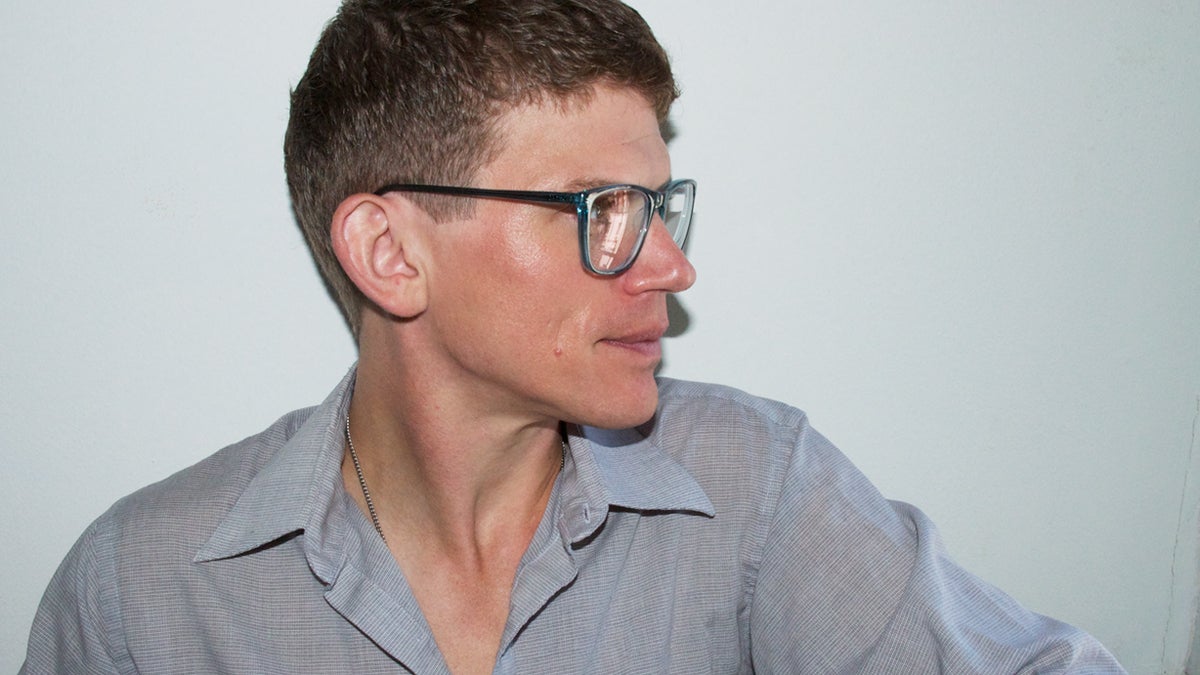Curator at Penn’s Institute of Contemporary Art helps shape major Whitney exhibit

Anthony Elms, a curator with the Institute of Contemporary Art at the University of Pennsylvania. (Photo Courtesy of Anthony Elms)
A Philadelphia art curator has been asked to assemble one of the most important events in the contemporary art world.
The Whitney Biennial, at the Whitney Museum of American Art in New York, will be put together, in part, by Anthony Elms, a curator with the Institute of Contemporary Art at the University of Pennsylvania.
The Whitney looked outside its own curatorial staff to find Stuart Comer of the Museum of Modern Art, Michelle Grabner of the Art Institute Chicago, and Elms. The organization gave the trio carte blanche to create a vision of the current state of American art.
“The Whitney decided to do something where they wanted us to work independently,” said Elms. “We worked mostly independently in selecting the artists for our floors, and working out what we wanted each of our sections to be.”
Elms has temporarily relocated to Manhattan for the final push before the show opens March 7. His floor will feature 24 artists, but not all at the same time. Several of his selections are performance- and film-based works which will rotate through the space during the two-month exhibition.
“I was interested in people with hands in different mediums, working with different methods,” said Elms, who selected poets and composers, as well as sculptors and painters, many of whose works are outside the medium the artist is normally associated with. “For example, Susan Howe trained as an artist — she has an MFA — but we recognize her as a poet now. Gary Indiana is known as an author, but a lot of people don’t know that he has made visual art for 20 years.”
Elms shies from making a definitive statement about the state of contemporary art (“It could be described as ‘sprawling'”), but as a part of a curatorial trio, he does not have to. His section need not coherently link to the other two parts.
“I know Stuart was quite interested in boundaries and people that cross boundaries, either geographical or by medium,” said Elms. “Michelle was very much interested in people who are makers and involved deeply in their craft, and also are teachers, involved in pedagogy somehow.”
Elms is interested in art that is repurposed, and re-magined. For example, he will bring in composer Robert Ashley for a performance of “Vidas Perfectas,” an updated, Spanish-language version of his groundbreaking “Perfect Lives” opera from the early 1980s..
Another artist Elms selected is from his own back yard. Terry Adkins was a professor at the University of Pennsylvania and a sculptor who often used musical instruments and found objects in his pieces. He often performed as part of his exhibitions.
Adkins died two weeks ago, very suddenly, of a heart attack. Elms said he had just completed a new sculpture — an visual interpretation of bird songs — and had begun discussing how to display it.
“He’s another example of a person overdue for attention for a long time,” said Elms, who had known of Adkins for many years before meeting him upon his arrival at Penn two years ago. “I have a lot of interest in music and sound, and he was always interested in music and sound, so he was someone I was naturally interested in.”
WHYY is your source for fact-based, in-depth journalism and information. As a nonprofit organization, we rely on financial support from readers like you. Please give today.





